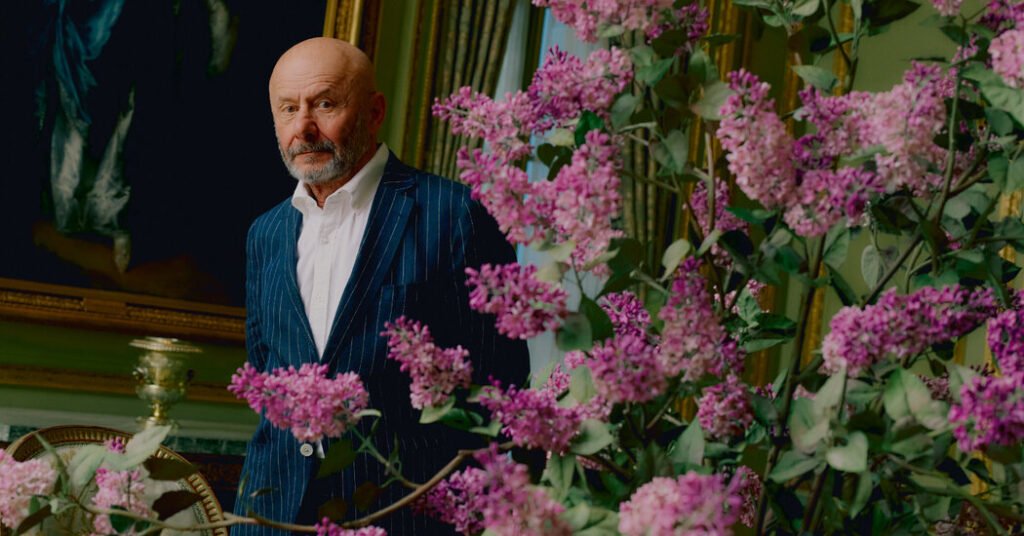At the upper levels of capital-S society, or what remains of it, the name Vladimir Kanevsky is quietly dropped in conversation as a tell for arrival, a foolproof marker of taste. “People who know, know,” said the interior designer and philanthropist Charlotte Moss, referring to Mr. Kanevsky, an artist who works in porcelain.
The fashion designer Tory Burch once commissioned a 30-person dinner service from him. Not to be outdone, the interior designer Alberto Pinto ordered up a set of Mr. Kanevsky’s floral dishes comprising more than 250 individual works.
The society swan Deeda Blair curated a show of his flower sculptures at the high-end department store Bergdorf Goodman. The designer Carolyne Roehm promptly acquired most of them.
Mr. Kanevsky’s status as society’s best kept secret seemed to change last week, when an Artnet headline declared: “Porcelain Virtuoso Blows Up at the Frick.”
The Frick Collection, a gloriously staid New York City museum that reopened on April 17 after a five-year, $220 million renovation, is the last place anyone might associate with the latest thing. But there, amid masterpieces by Vermeer, Bellini and Rembrandt in the refreshed Beaux-Arts mansion on Fifth Avenue, stand 30 of Mr. Kanevsky’s specially commissioned floral works.
For Mr. Kanevsky, the Frick commission was both a homage “to my beloved museum,” as he said by phone from his home in Fort Lee, N.J., and a nod to the fresh flowers used by Helen Clay Frick, a daughter of the museum’s founder, to lighten the somber mood of the building when it opened to the public in 1935.
A selection of modestly scaled replicas of Mr. Kanevsky’s new works for the Frick were produced to sell at the museum’s gift shop: All 28 had sold by opening day. Priced from $3,000 to $15,000, they were a far cry from usual tote bag souvenirs.
The Kanevsky commission was a testament to immigration, according to Howard Slatkin, the interior designer credited with having discovered the artist. “It’s a classic only-in-America story,” Mr. Slatkin said by phone from his home in Bermuda. “Or, at least, it would have been until recently.”
Born in Kharkiv, Ukraine, when it was part of the Soviet Union, Mr. Kanevsky, now 74, was trained as an architect. He came to the United States as a political refugee in 1989. “It was not a great time to be Jewish in Russia,” Mr. Slatkin said.
Speaking virtually no English at the time, Mr. Kanevsky joined a community of Ukrainian expatriates who had settled in and around Hoboken, N.J. A lawyer friend of his spotted a flyer Mr. Slatkin had posted at a health food store seeking a craftsperson capable of replicating items from his mother’s collection of Meissen porcelain.
“I wanted someone who could copy an 18th-century melon tureen,” Mr. Slatkin said.
Though Mr. Kanevsky knew almost nothing about porcelain, he began experimenting, using a small kiln he had purchased to fire clay sculptures. He eventually developed a technique for creating, petal by petal, the flowers that would bring him to the attention of the society people who would become his principal patrons.
“Without even realizing it, I developed this niche,” Mr. Kanevsky said.
Ms. Moss, the interior designer, was an early backer. “I became aware of him through Howard Slatkin and commissioned him to make pots of flowers based on the seasons for me to sell,” she said. These proved so successful that Mr. Kanevsky was spurred on to bolder experiments. “He did a tree peony for a client in Texas,” Ms. Moss said.
Soon, his sculptural flora began turning up in some of Manhattan’s most elegant rooms; in shelter magazine features; at the Dior home furnishings store in Paris; at exhibitions at the Hillwood Estate in Washington, D.C., the one-time the home of the cereal heiress Marjorie Merriweather Post; and at the Winter Palace in St. Petersburg, Russia, a former residence of czars that is now a part of the State Hermitage Museum.
“His artistry bridges past and present,” Xavier F. Salomon, the deputy director and chief curator at the Frick Collection, said in a statement. It also melds the illusion of floral recreation with the muscularity of sculpture. Consider Mr. Kanevsky’s wild artichoke set in a pot near Giovanni Bellini’s “St. Francis in the Desert,” perhaps the Frick’s most celebrated painting, or his human-scale hollyhock set alongside a monumental portrait by Anthony van Dyck.
Mr. Kanevsky modestly attributes his success to the combination of his architectural training and happenstance. When he accepted the Frick commission, he was far from confident that his sculptures belonged among the greatest works of all time.
“There are so many masterpieces,” Mr. Kanevsky said. “My first task was to understand, Who am I next to a Bellini? Do I belong in that world? Obviously, no.”
The conclusion he reached was that his flora could be thought of as conversation pieces, in dialogue with great masterworks. “Then it’s up to viewers to decide whether they deserve to be there,” he said.

